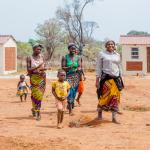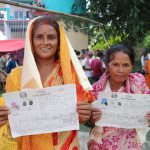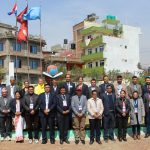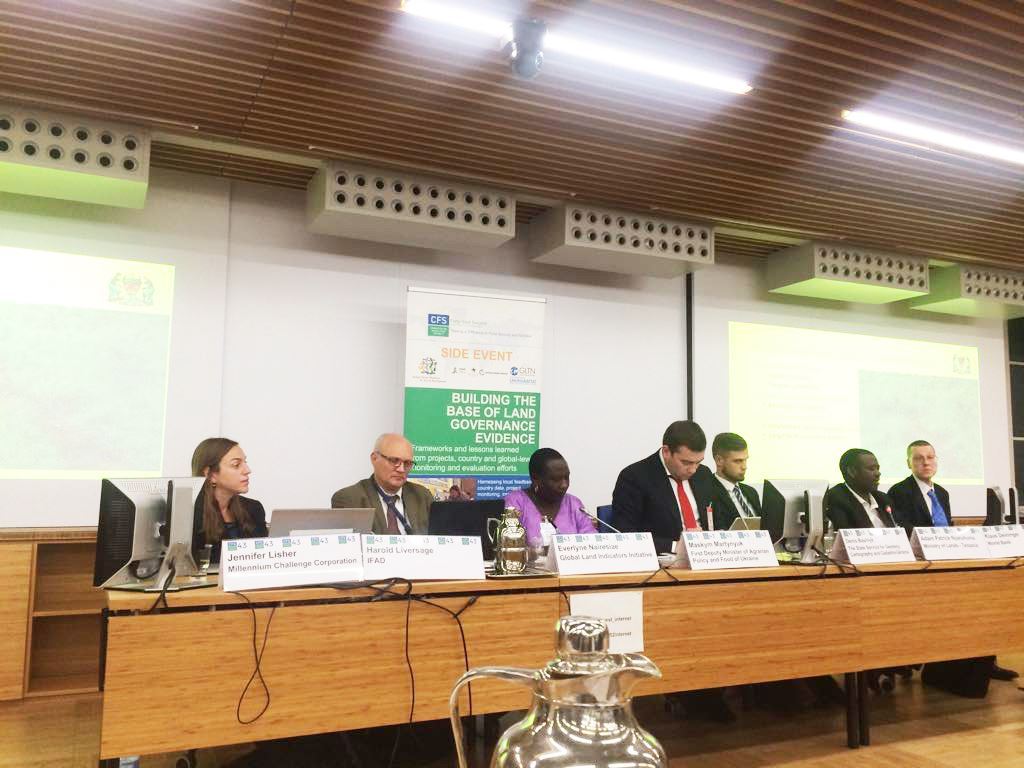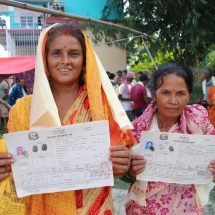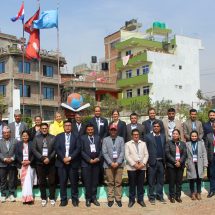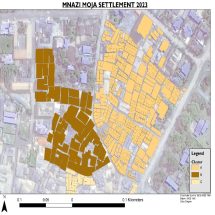
In collaboration with several partners, the Global Land Tool Network held a successful side event with the theme “Building the Base of Land Governance Evidence: Frameworks and lessons learned from projects, country and global-level monitoring and evaluation efforts” on the side lines of the 43rd session of the Committee for Food Security (CFS43). The meeting which took place on 18th October 2016 at the FAO headquarters in Rome focussed on experiences from country-level monitoring of land tenure and land governance in the context of the Voluntary Guidelines (VGGTS), Responsible Agriculture Investments (RAI) and Sustainable development Goals (SDGs). Profiling the experiences from government of Ukraine, India and Tanzania, the meeting underscored the importance of land monitoring in enhancing access to land information for transparency and accountability, uptake of responsible investments models, land transactions and tax collection, and securing land tenure rights for women and indigenous communities; while contributing to food security. For instance, the Ukraine Minister of Agriculture stated that land monitoring generates evidence regarding the actual state of land governance that helps curtail political speculation on land while calling for accountability by local and central government authorities that deal with land.
It was clear from the session that land monitoring and impact evaluation are critical components for efficient land governance and data is critical in decision making for governments, communities and investors. A glaring gap in harmonized approaches for land monitoring and impact measurement were highlighted, while recognizing existing initiatives like Global Land Indicators Initiatives, established in 2012 to make global scale land monitoring possible by 2021. The inclusion of land indicators in the SDGs 1, 5 and 11 also profiled as opportunities not only to monitor but also evaluate the impact of land interventions on food security. Panellist and the participants of this session agreed on the need to tap into the rich experiences and lessons on monitoring and impacts evaluation of land projects from various governments, multilateral agencies and international partners to strengthen institutional capacities, learning and decision making. In conclusion, the called for more global attention on the need for harmonized approaches to monitoring land tenure and land governance monitoring and impact evaluation . The need for more dedicated support from government, bilateral and multilateral agencies, the civil society and donors in the improvement of land monitoring and evaluation systems, capacity for data generation and evidence-based decision-making was encouraged.
The side event was organized by the Global Donor Working Group on Land (GDWGL), IFAD, MCC, World Bank and the Global Land Tool Network (GLTN).



